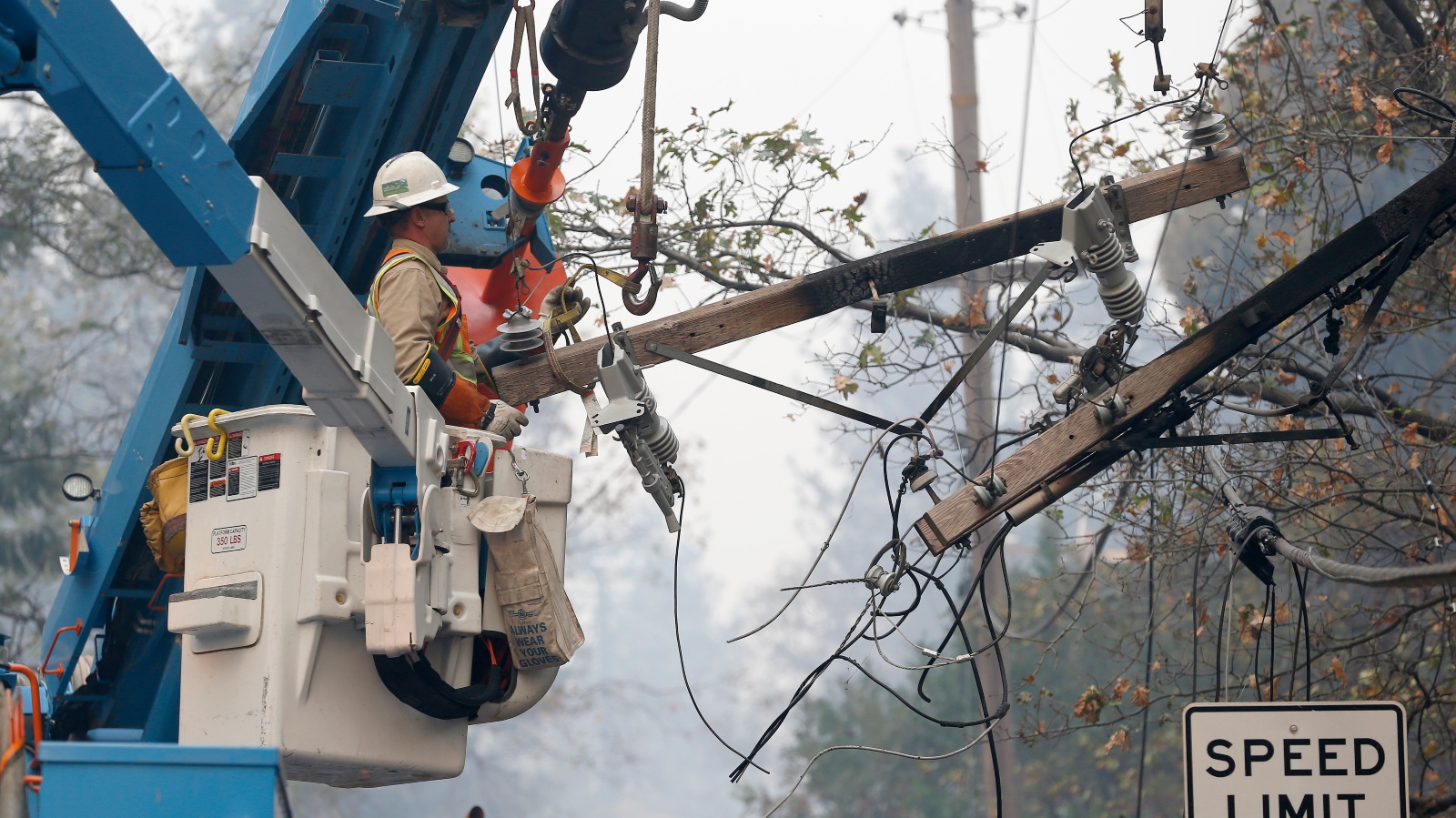Pacific Gas & Electric, California’s private utility company that maintains a monopoly over electric service in the state, let go of thousands of contractors and employees across multiple trades over the last month.
Union leaders told members that the layoffs were due to overspending, and that as Pacific Gas & Electric, or PG&E, overruns its budget towards the end of the year, the company decided to push back fourth-quarter work into the new year.
Workers let go include vegetation management inspectors, tree trimmers, electrical linesmen, and pole testers — all work that is critical to wildfire mitigation.
“[We] do annual maintenance to ensure fire safety and have deadlines to get it done,” said a vegetation management inspector in the north Bay Area who requested anonymity. “By pushing back fourth-quarter work, [the crews] are falling behind one to two months.” The delay could be costly: Winter is often the best time to prune trees, when cracks and deadwood are more visible and trees are not actively growing.
According to reports from the state’s Office of Energy Infrastructure Safety, PG&E is already far behind on work orders for line maintenance. “That’s a major safety concern,” said Mark Toney, executive director of TURN, a utility ratepayer advocacy group, adding, “I keep getting calls from hospitals and housing projects that can’t get connected to the grid.”
The private utility, one of the largest in the country, has played a notorious role in sparking some of the largest fires in the state, including the Dixie Fire in 2021 and the Camp Fire in 2018, the deadliest fire in California history. In 2019, PG&E filed for bankruptcy after announcing a $13.5 billion settlement with California wildfire victims. In April of last year, it was put under a period of “enhanced oversight and enforcement” by the California Public Utilities Commission due to concerns that PG&E wasn’t clearing trees away from power lines fast enough, raising the risk of fallen branches sparking another fire. But the commission voted to lift the probation last week, saying that the company had made progress.
“They should be moved up the ladder of probation,” not have their restrictions removed, said Toney. “They keep causing fires and failing inspections.”
The International Brotherhood of Electrical Workers 1245, or IBEW 1245, the union that represents PG&E workers, provided no comment on the layoffs. But workers who attended a union meeting on Thursday said leaders referenced the job losses as “large and unprecedented,” said that workers laid off across crafts numbered in the thousands, and that decisions were being made by PG&E upper management because of budget constraints.
The utility has been at work burying, or undergrounding, 10,000 miles of overhead power lines in high-fire risk districts as part of its wildfire mitigation plan, a labor intensive and pricey undertaking that will cost an estimated $25 billion.
Toney and other rate payer advocates have criticized the initiative as a way for the utility to invest in capital projects that increase shareholder returns while neglecting the work that is really needed. “I am concerned that they are diverting money from basic operations, maintenance, and repairs and putting it into undergrounding and other capital projects that create profit,” said Toney. He added, “It’s hard to understand how they’re running out of cash with these double digit rate increases,” referring to the utility’s proposal to hike rates by about 20 percent in 2023, after a similar jump in 2022.
In a statement to Grist, PG&E said that the company was cutting back contractors based on the amount of work that needs to be done and that they typically use contractors as a flexible resource that they ramp down at the end of the year.
“Overall, we have reduced the number of contractors working for PG&E in recent weeks due to several factors, including completing or nearly completing the 2022 work plans these contractors had supported,” said PG&E spokesperson Matt Nauman. He also said that snow in the mountains has caused some work to stop for the season and that PG&E is looking to bring more of its tree work in-house by hiring 150 vegetation management inspectors as employees. Currently almost all the tree work is done by contractors.
The crews have been told they can likely expect to return to work in January and February, but according to another vegetation management contractor who was let go and was at the union meeting on Thursday (but who asked not to be named), “many groups weren’t given a set return date” and “‘no guarantees’ was emphasized at length.” Rex Casteel, who cleared hazard logs in the town of Paradise after the devastating Camp Fire, added that while this is only his fifth winter, he has never encountered anything like this work stoppage before.
“They saved money at the end of this year, but they are going to be squeezing their workforce to get compliance done next year,” said one worker.
Update, December 12, 2022: This piece has been updated to anonymize the names of two sources.


